Search Results for 'Monastery School'
16 results found.
Going back to school
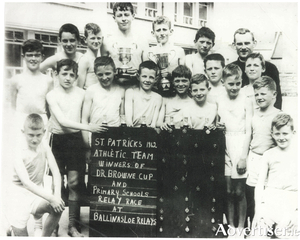
This is the time of year when parents are preparing to get their children ready for going back to school, when the kids are feeling sorry for themselves, and their days of carefree freedom in the sunshine are coming to an end.
College House and Monastery School

This property originally consisted of College House, fronting on Market Street, and the Monastery School to the rear of Bowling Green with the residence of the Patrician Brothers to the east of the enclosed quadrangle and the out offices to the west thereof.
Cyril Mahony, a superb comic actor
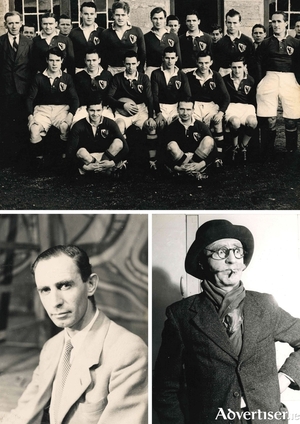
Cyril Mahony was born in February 1913 in the family home on Prospect Hill. His mother was Mary Teresa Cunniffe from Loughrea and his father Gerry was a member of the RIC who at one time was stationed in Belfast. He eventually left the force and came back to his mother’s house on Prospect Hill. She was Anne Flaherty from Conamara, a native speaker and a well-known maternity nurse.
The Atlanta Hotel
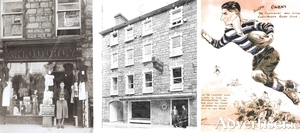
Joseph Owens lived in Glenamaddy with his wife, who was born Annie M Tuohy. They had three children, Dick, Mary, and her twin Joseph (born February 4, 1912), who was known to one and all as Josie. The father died very young. Annie remarried, this time to a man named Doorly, and in 1922, the family bought a four-bay four-storey early 19th century house in Lower Dominick Street from Nora O’Donnell and moved to Galway. Annie was a busy woman, she opened a drapery shop where she designed clothes, made them and sold them in her shop, and she kept lodgers upstairs, all as she was rearing her children.
The Patrician Musical Society
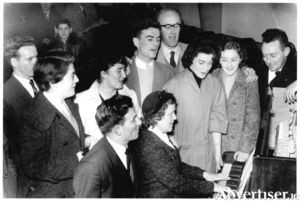
On this day, February 29, 1952, a meeting was held in the Bish the purpose of which was, “That a choral society titled the Patrician Choral Society under the auspices of the Patrician Brothers Past-Pupils’ Union be here and now formed.” The motion was proposed, seconded and passed unanimously. Jack Browne was elected President, Thomas Lydon as Vice-President, Jack Doherty and Brother Cuthbert as directors and Jack Begley as Treasurer.
St Patrick’s National School

On January 15, 1827 two Patrician Brothers, Paul O’Connor and James Walsh, took up residence in Lombard Street and set up the Monastery School. The attendance on that first day was 300 boys, many of whom had little interest in learning because they were poor and hungry. So the Brothers set up The Poor Boy’s Breakfast Institute in May 1830. It continued seven days a week, 365 days a year for many years after the founders' time. The breakfast consisted of porridge with molasses or treacle, and during the Famine, they fed 1,000 boys every day. The ‘Old Mon’ became a vital cog in education in Galway.
From Crooked Lane to Church Lane
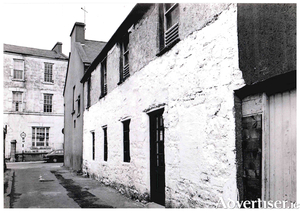
On a 1625 map of the city, this lane is referred to as ‘Crooked Lane’ and a little later in that century, it was commonly known as ‘Céim Cam’. In 1708 it was referred to as ‘Church Lane’ and on two documents dated 1824 it is down as ‘Bohercranmore’ (the Lane of the Big Tree) and also as Church Lane, sometimes called Lána an Teampaill. During the last century it was locally known as ‘O’Gorman’s Lane.
One hundred and ninety five years of the Patrician Brothers in Galway

In 1790, the Rev Augustine Kirwan, Catholic warden of Galway, established the Galway Charity School near the Shambles Barracks for the education of poor boys. For a variety of reasons, the school failed and eventually, the Brothers of St Patrick, also known as the Patrician Brothers, an order founded in 1808, were invited to take charge.
One hundred and ninety five years of the Patrician Brothers in Galway

In 1790, the Rev Augustine Kirwan, Catholic warden of Galway, established the Galway Charity School near the Shambles Barracks for the education of poor boys. For a variety of reasons, the school failed and eventually, the Brothers of St Patrick, also known as the Patrician Brothers, an order founded in 1808, were invited to take charge.
The unveiling of a plaque to Fr Griffin
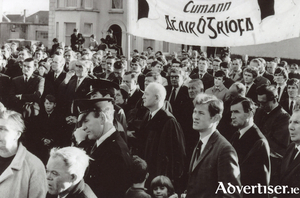
On November 14, 1920, a young curate, Father Michael Griffin, was lured from his house at No 2 Montpellier Terrace by the Black and Tans. Whatever ruse they used to get him out of the house, it was not to go on a sick call, as he did not take the holy oils or the Eucharist with him, but went peacefully. He went missing and volunteers and search parties were organised and combed the city and surrounding countryside looking for him. A week later his body was found buried in a bog at Cloch Sgoilte in Barna. There was an international outcry. He had worked in the parish of Rahoon since June 1918 and was hugely popular. He spoke in Irish to young and old, organised feiseanna, currach races, and donkey races on Silver Strand. He was very republican and was suspected by the Tans of having heard the last confession of the informer Patrick Joyce, which was probably the reason why they abducted him and tried to extract the identity of Joyce's killers from him.

